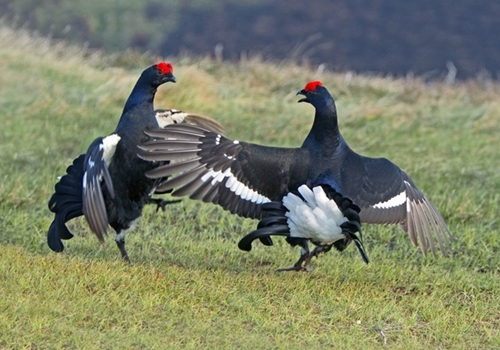
What is the Black Grouse Range Expansion Project?
The Black Grouse Range Expansion Project is an initiative funded by Natural England's Species Recovery Programme. It aims to protect the black grouse, a red-listed species of high conservation concern, from the potential negative impacts of climate change. The project focuses on increasing breeding success and expanding the black grouse's current range in the North Pennines into the North York Moors using a conservation translocation technique.
Why are black grouse populations declining?
Black grouse populations have declined in modern times due to changes in land management. As commercial forestry plantations matured, they became unsuitable for the species. Additionally, habitat loss and fragmentation, as well as predation, have contributed to their decline.
How will the project help increase black grouse breeding success?
The project involves fitting female black grouse with GPS tags to track their movements and identify optimal brood foraging habitats. By understanding the relationship between brood habitat usage, insect abundance, and chick survival, the project aims to inform grazing regimes that create favorable brood-rearing habitats.
Why is the North York Moors a suitable location for re-establishing black grouse?
The North York Moors offer environmental conditions that may be more suitable for black grouse compared to their current North Pennine range. These more easterly, low-altitude sites have lower rainfall and warmer temperatures in June, which aligns with the species' requirements for successful breeding. Additionally, the presence of grouse moors in the North York Moors provides predator protection and suitable habitats on the moorland fringe.
How will black grouse be moved to the North York Moors?
Black grouse will be sourced from grouse moors in the North Pennines. Under a Natural England licence, they will be caught at night, transported to the release site in the North York Moors, and released immediately. Some birds will be equipped with radio transmitters to monitor their settlement patterns, survival, and lekking behavior.
What role do grouse moors play in black grouse conservation?
In England, 96% of the remaining black grouse population lives on the edges of moors managed for driven red grouse. These moors provide crucial benefits, including protection from generalist predators and the retention of suitable moorland habitats. Therefore, all the release sites in the North York Moors are located near grouse moors to ensure the translocated birds have access to these essential resources.
How does the project address the issue of limited female dispersal?
The significant gap between the North Pennines and the North York Moors has limited natural dispersal between these areas. By translocating both male and female birds to the North York Moors, the project aims to overcome this dispersal barrier and establish a new breeding population.
What is the long-term goal of the project?
The long-term goal of the Black Grouse Range Expansion Project is to establish a self-sustaining population of black grouse in the North York Moors. This will contribute to the conservation of this iconic species and expand its range in England, safeguarding it against future threats.
How can I support the project?
We are currently fundraising for the project and you can donate here: